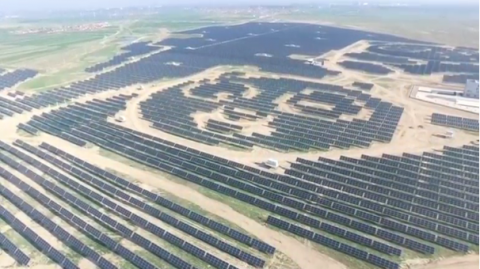
SHANXI PROVINCE, China (Reuters) — In a country where anything from chopsticks to slippers can be designed to look like pandas, one Chinese energy company is going a step further by building 100 solar farms shaped like the bears along the route of the ambitious Belt and Road initiative.
Panda Green Energy Group has already connected one such 50-megawatt (MW) plant to the grid in the northern province of Shanxi, the first step in a public relations stunt that emphasizes the cuddly side of the world’s No.2 economy.
Built with darker crystalline silicon and lighter-colored thin film solar cells, the plant resembles a cartoon giant panda from the air.
The Hong Kong-based firm is currently in talks with Canada, Australia, Germany and Italy to launch more panda-shaped power stations.
The Belt and Road initiative is a plan to emulate the ancient Silk Road by opening new trade corridors across the globe using roads, power lines, ports and energy pipelines.
A 100-MW panda power plant would be expected to generate 3.2 billion kilowatt-hours (kWh) of energy over 25 years, according to the company, capable of supplying power to over 10,000 households annually.
Panda Green Energy is currently constructing its second panda power plant in Shanxi, which accounts for a quarter of China’s coal reserves.
Utilization of one panda solar power plant will save the equivalent of a total 1.06 million tons of coal and cut emissions of greenhouse gases by 2.74 million tons in 25 years, the company said.
The firm has been investing in and running solar power plants in China’s major solar hubs such as Xinjiang and Qinghai province, as well as some solar projects in Britain.
Shanxi aims to install 12 gigawatts of solar capacity by 2020 versus 1.13 gigawatts installed in 2015.







